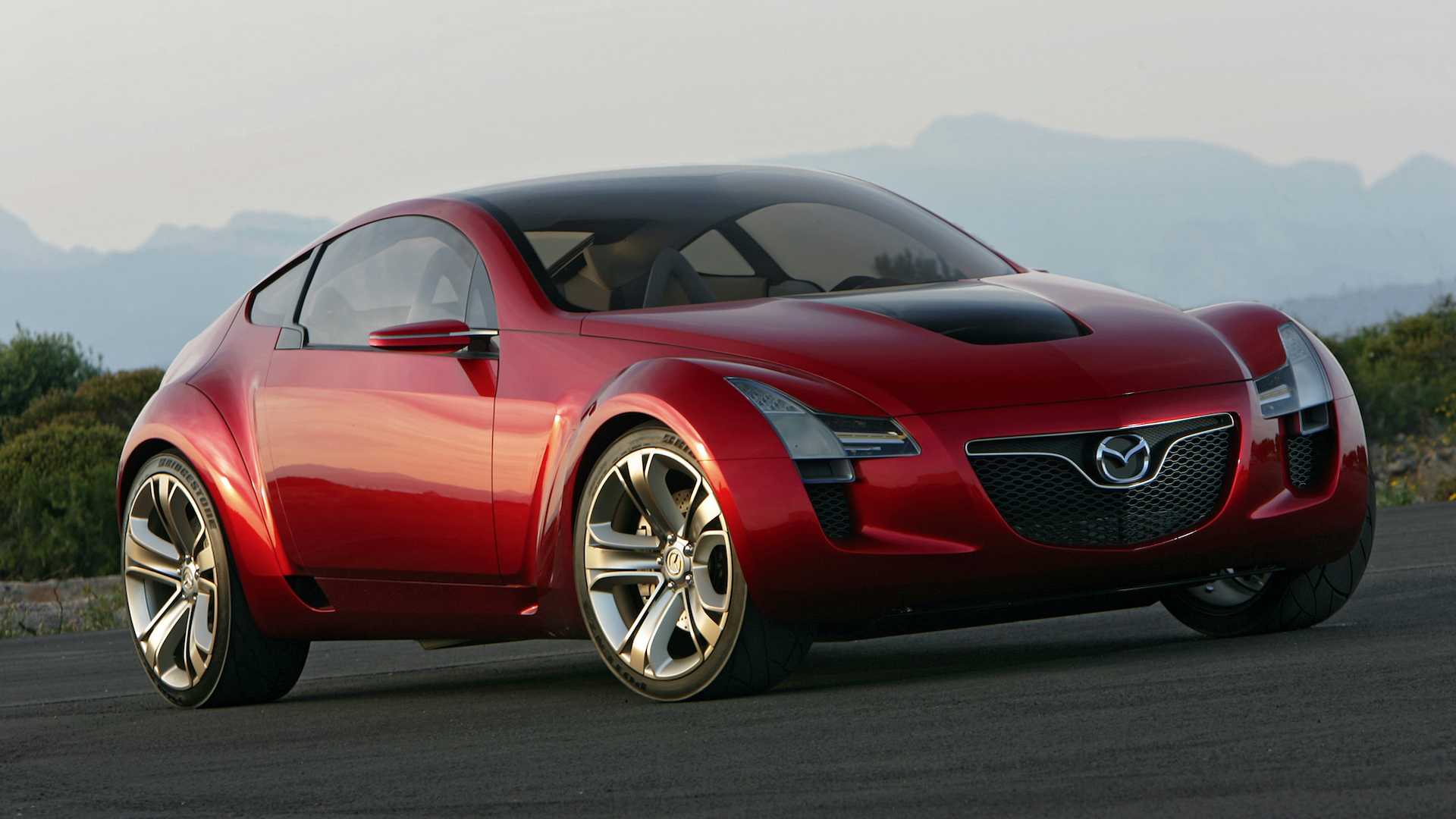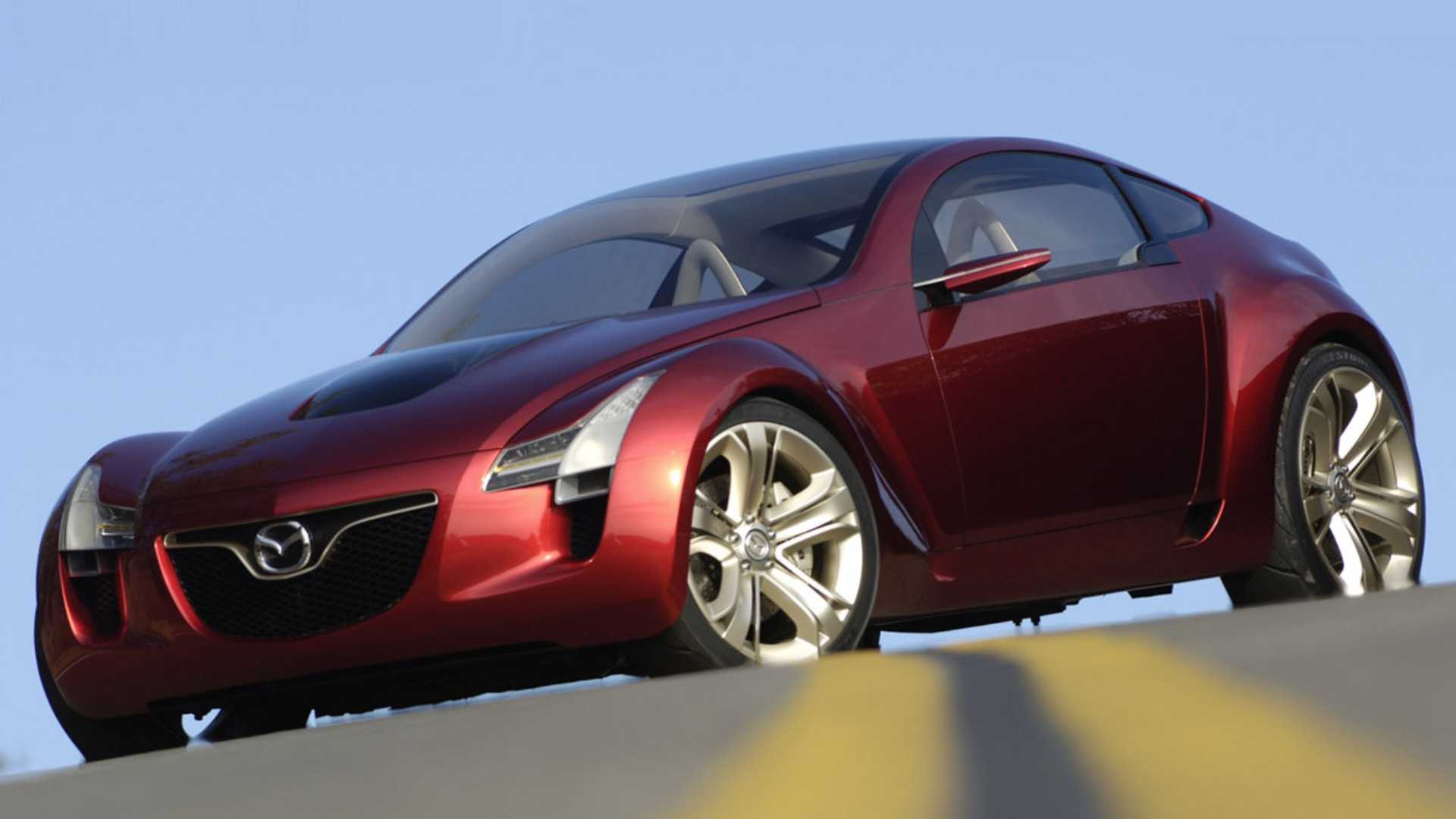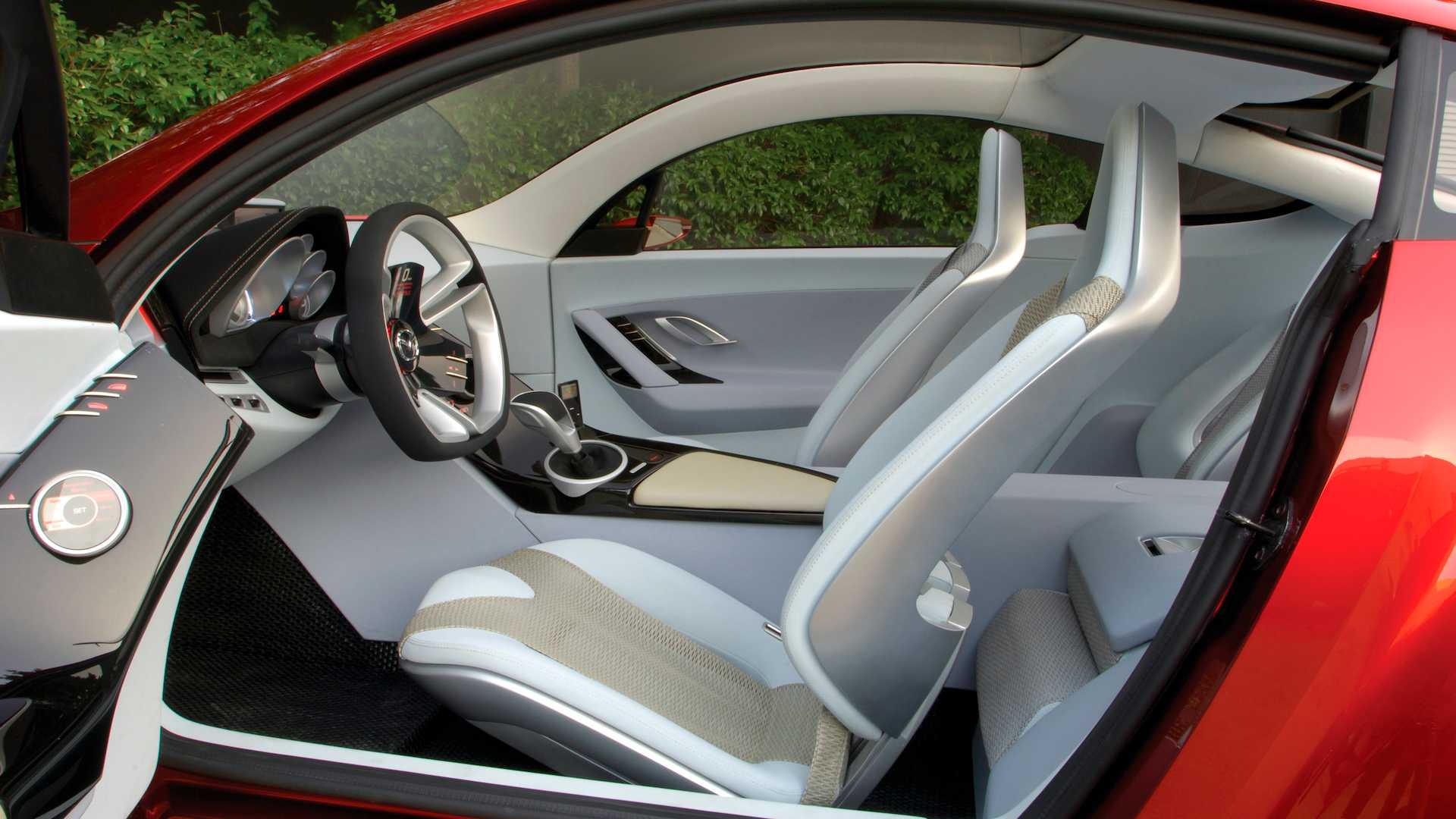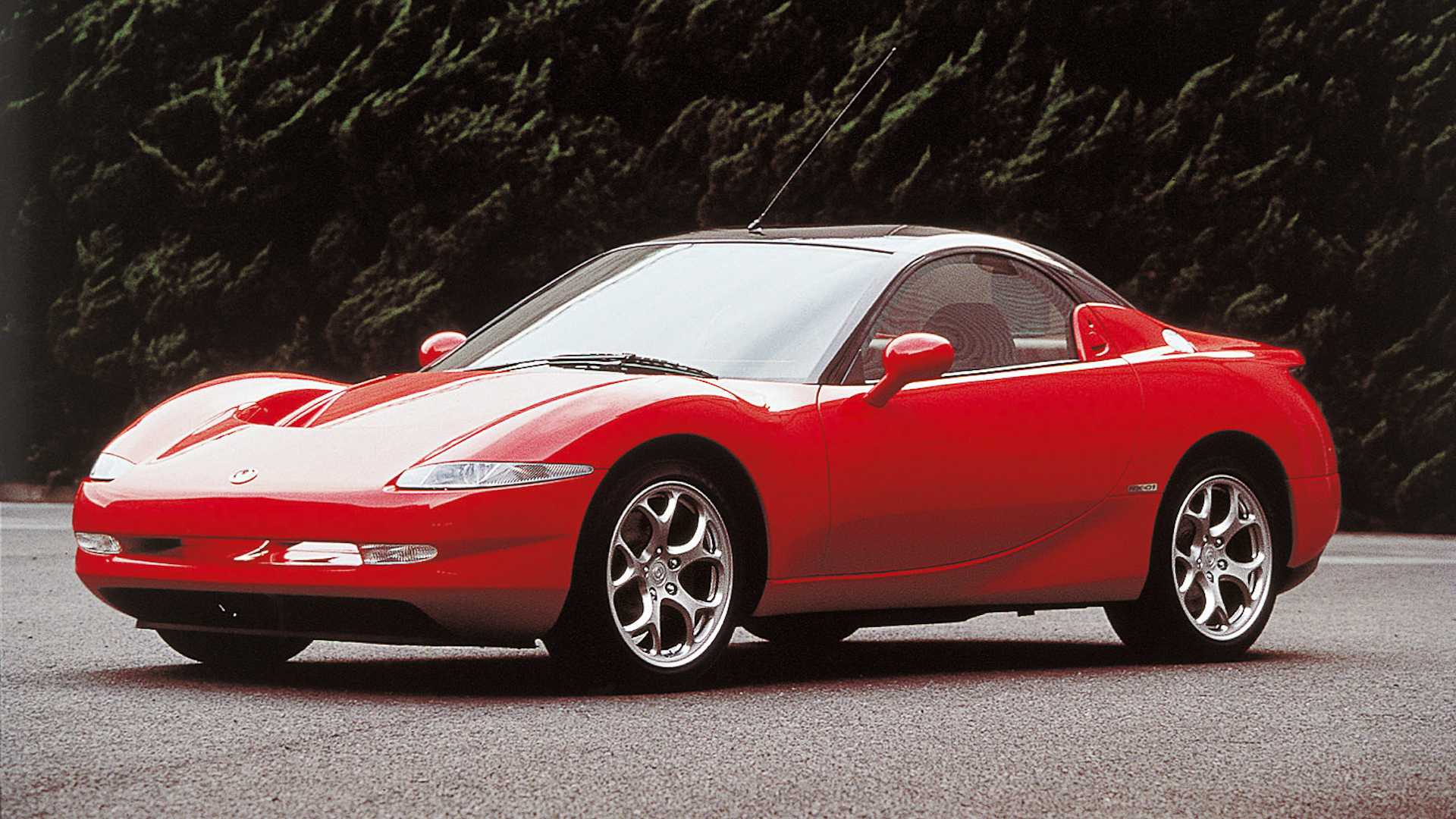Quick Links
-
Dynamic and Vibrant: Discover the Mazda Kabura
-
Inspired by Aviation: The Design of Kabura
-
Three Is the Ideal Number: The Inside of Kabura
-
Other Impressive Mazda Concept Vehicles
In today's automotive industry, the Toyota GR86 is one of the most well-known and beloved sporty coupes around; praised by the automotive press and car enthusiasts alike, it provides a complete package of good looks and a fun, engaging driving experience. While the GR86 was the result of Toyota’s collaboration with Subaru , rumors are circulating about a potential collaboration with Mazda for the upcoming version of the model.
Many aren't aware that Mazda created an opponent for the Toyota 86 about twenty years ago—a sleek sports car concept that remained just that, a concept: the Kabura concept, which was presented in 2006.
Dynamic and Vibrant: Discover the Mazda Kabura

Mazda unveiled the Kabura concept at the 2006 North American International Auto Show held in Detroit. Designed with a sporty nature, this vehicle aimed to offer some level of functionality without being strictly for families—it would be more suitable for a younger individual or couples looking for a versatile option capable of carrying occasional passengers along with minimal luggage.
The origin of the name Kabura traces back to Japan’s historical roots; it stems from "Kabura-ya," which refers to an arrow known for producing a distinct whistling noise as it travels through the sky. These arrows often signaled the commencement of combat. Mazda adopted this idea of the 'initial arrow launched in warfare' to embody their strategy toward technological advancement and forward movement.
The Kabura encapsulates the fundamental ideas underpinning Mazda’s renowned "Zoom Zoom" tagline, which was prevalent when the concept vehicle debuted: spirited energy, innocent fascination, and joy derived from driving. Given that Mazda’s clientele tends to be relatively young, the brand aimed to attract its intended audience—this model was crafted particularly for younger purchasers. The aim was to produce a design that was athletic and budget-friendly but still maintained ample room for passengers and luggage.
There is only a restricted amount of data accessible about the Kabura’s power system; nevertheless, we are aware that it features a 2.0-liter MZR inline-four engine, sending drive to the back wheels through a 6-speed manual gearbox.
Influenced by Aerial Navigation: The Creation of Kabura's Configuration

The Kabura's design is markedly futuristic, incorporating various features inspired by aircraft design. As former director of design at Mazda North American Operations, Franz von Holzhausen, described, the Kabura possesses
A sleek and agile body design paired with a robust posture, prominent wheel arches, and taught exterior panels. [... ] Each line seamlessly connects to the next without loose ends. The surfaces are stretched tightly across the wheel arches, much like a spider’s web pulled taut between support structures.
Another aviation-inspired element The dual-pane glass hatch situated behind the B-pillar has a top panel raised by an electric motor akin to how an aircraft's aileron moves. Besides functioning as a spoiler, this panel serves as an air vent; lifting it enhances the headspace for backseat occupants. An environmentally conscious feature that was quite innovative for a vehicle made almost 20 years prior is the inclusion of a compact solar cell incorporated into this glass panel, aiding in charging the vehicle’s battery and controlling the temperature.
The Kabura combines traditional coupe styling with contemporary elements and flowing contours; the vehicle’s windscreen and part of its roof form one continuous piece of glass stretching from the dashboard to the B-pillar. This design allows more sunlight into the interior, lending the cabin a bright and spacious ambiance. However, this glass segment includes a cutting-edge feature: it offers variable tinting which controls how much light passes through. The driver can simply turn a dial to switch the rooftop area between entirely transparent and fully opaque within moments.
Three Is the Ideal Figure: The Inside of Kabura

Let's return to Mazda's demographic study and their focus on presenting the Kabura to a younger audience. During the initial phases of designing the concept car, Mazda determined that the conventional layout would not appeal to this age group. sports coupe Would not be sufficient. Typically, such a vehicle would come equipped with a 2+2 configuration featuring two small backseats hardly large enough for kids and more appropriate for carrying luggage rather than people. The Mazda team recognized that younger drivers usually transport only one or two passengers and opted to modify the seating arrangement as a result. Von Holzhausen commented additionally:
Obviously, the typical 2+2 compact coupe design with constrained back entry and insufficient passenger room isn’t suitable here, so we developed a 3+1 arrangement for Kabura to address these issues.
To create additional space for the front passenger seat, the glove compartment was taken out. Consequently, the front passenger seat was moved around six inches closer towards the driver’s position. This adjustment provided extra room for the backseat situated right behind, offering nearly identical amounts of headspace and legroom compared to those experienced by the front passenger. On the flip side, the seating area positioned immediately behind the driver remains quite cramped and is generally unsuitable for frequent use; thus, this distinctive setup has been labeled with the "3+1" designation.
The Kabura’s distinctive seating arrangement explains its unconventional doors: unlike typical sports coupes which usually have two doors, the Kabura features a regular door on one side paired with a compact sliding door situated behind the usual right-hand-side door. Upon opening the passenger-side door, this additional door can be activated via a button to slide seamlessly into an indentation within the vehicle’s structure, thereby providing effortless entry for the person sitting in the backseat.
Other Impressive Mazda Concept Vehicles

The Kabura was merely one among many groundbreaking concept vehicles unveiled by Mazda throughout the years; below are three additional examples. obscure concepts developed by the firm to present novel design concepts, innovative power systems, and fresh perspectives on how mobility might appear.
RX-01: In 1995, the RX-01 concept made its debut at the Tokyo Motor Show. It was conceived as a budget-friendly, stripped-down sports car featuring small proportions. This model relied on a naturally-aspirated Wankel rotary engine that underwent enhancements compared to earlier versions. These upgrades were aimed at boosting horsepower, reducing exhaust emissions, enhancing fuel consumption, and improving thermal effectiveness. Despite these advancements, the RX-01 never entered into mass production but found itself stored away within Mazda’s historical records.
RX-Evolv: Four years following the introduction of the RX-01, Mazda showcased yet another concept vehicle equipped with a rotary engine at the 1999 Tokyo Motor Show—the RX-Evolv. This model distinguished itself beyond its distinctive power unit through its unconventional styling as well. All the potency generated by the rotary engine was directed to the back wheels and complemented by a six-speed manual gearbox.
The RX-Evolv foresaw certain aspects of a production Mazda model that would debut merely four years afterward: the RX-8 The RX-Evolv, nevertheless, was never intended to be a production model.
RX-Vision: Lastly, a newer idea presented at the 2015 Tokyo Motor Show was the RX-Vision coupe, utilizing Mazda’s newly unveiled technology. Kodo design language And predicted the brand’s upcoming trajectory. The RX-Vision featured a rotary engine equipped with SkyActiv technology, coupled with a six-speed manual gearbox.
It was launched together with a high-performance version named the RX-Vision GT3 Concept; this vehicle adheres to Group GT3 rules and subsequently showed up in the Gran Turismo The RX-Vision racing car was never produced, but it became an exhibit at the Mazda Museum located in Hiroshima.
Sources: Mazda
